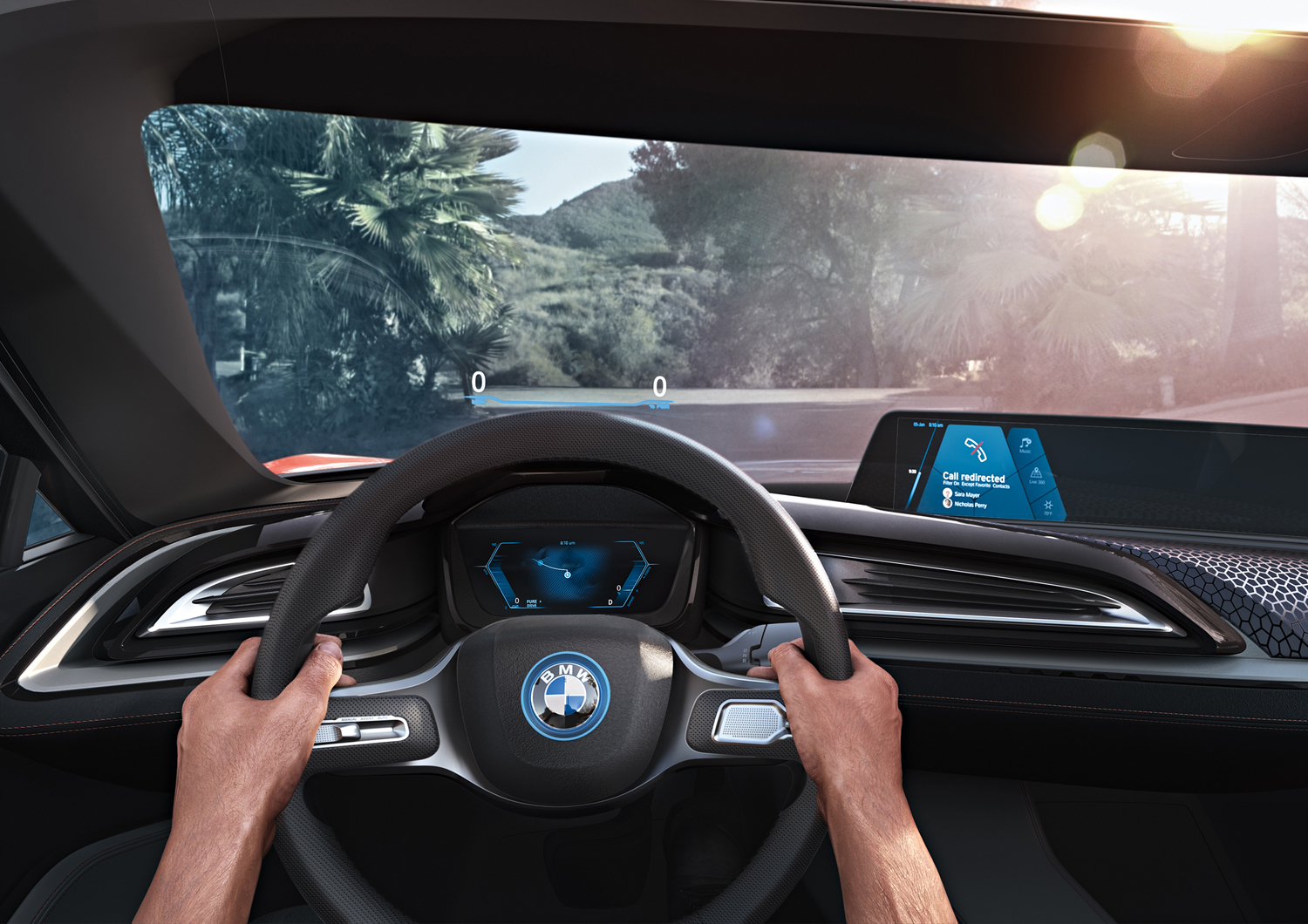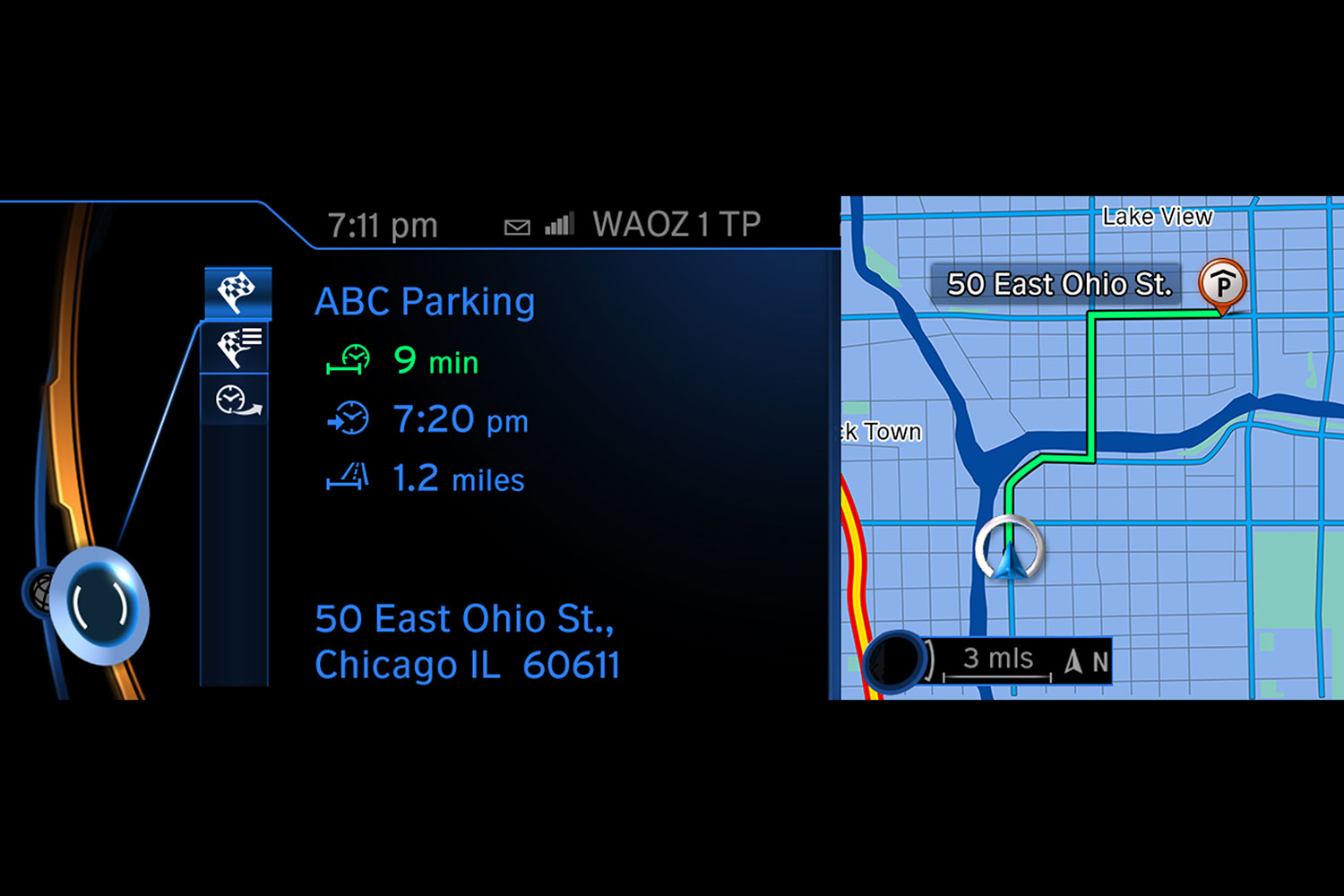BMW has traveled to the Consumer Electronics Show (CES) in Las Vegas, Nevada to introduce a new concept known as the i Vision Future Interaction. The i Vision Future Interaction is based on the i8 Concept Spyder that was shown at the 2012 edition of the Beijing Motor Show, and it was built to highlight what the sports car of tomorrow could look like inside.
Most new features are centered around a technology called AirTouch that lets the driver control the car’s navigation, entertainment, and connectivity functions with simple gestures made with a flat hand. AirTouch uses sensors installed in the dashboard to activate the motion recognition software on a large, 21-inch panoramic screen. Once it’s on, the front passengers can navigate the infotainment system without having to make contact with the screen, and AirTouch reduces the number of steps needed to make a selection — such as to type in an address in the navigation system — by detecting what the user might need to do next and displaying the option on the screen.
The user can validate an action by tapping one of the two AirTouch buttons in the cabin. One is on the left side of the steering wheel, and the other is integrated into the passenger-side door panel. The setup lets the front passenger navigate the infotainment system without having to awkwardly bend over the center console.
BMW has a few more tricks up its sleeve. The i Vision Future Interaction concept offers three driving modes, called Pure Drive, Assist, and Auto. In Pure Drive, the driver has full control of the car, and key information is shown on a heads-up display. In Assist mode, the car is driven manually but the driving aids automatically kick in if they sense that a collision with another car or with an object in the road is imminent and unavoidable. Finally, in Auto mode, the i Vision Future Interaction drives itself without any human input. The steering wheel turns blue and retracts by a few inches, and the seats become less supportive in order to give the driver more freedom to move and enjoy the view.
Visually, the i Vision Future Interaction concept stands out from the i8 Concept Spyder that it’s based on because it’s not equipped with doors. Technical details haven’t been published, so whether the concept is powered by a stock, i8-sourced gasoline-electric plug-in hybrid drivetrain is up in the air.
The self-driving technology built into the i Vision Future Interaction concept and the gesture-controlled infotainment system will become available on regular-production BMWs in the coming years. Additionally, the fact that BMW has updated the i8 Concept Spyder strongly suggests that a long-rumored roof-less version of the carmaker’s gasoline-electric sports car is right around the corner.














